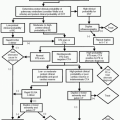Skull Fractures
Norman J. Beauchamp Jr.
Andrew L. Holz
Skull fractures can be seen with blunt or penetrating trauma. The skull is, in most circumstances, a structure requiring significant force to fracture. One might expect that this indicates a direct correlation with intracranial injury, however the presence of a skull fracture is not predictive of intracranial injury as detected by computed tomography (CT). Forces applied to the skull are often insufficient to fracture the bone but more than sufficient to injure the meningeal structures and brain parenchyma. Therefore, the absence of a fracture does NOT exclude intracranial injury.
Infection.
Skull fractures are considered “open fractures” if there is extension into the paranasal sinuses, middle ear cavities, or mastoid air cells, or when there is an overlying superficial soft tissue laceration. Basilar skull fractures, which often enter the paranasal sinuses, middle ear cavities, or mastoid air cells, can be detected clinically if rhinorrhea or otorrhea is present and are suggested by periorbital or postauricular ecchymosis. Both the nonbasilar open fractures and basilar skull fractures put the patient at risk of infection.
Meningeal or Parenchymal Injury.
Skull fractures in general, but especially those depressed more than 5 mm deep to the inner table, may lacerate the dura or cause brain parenchymal injury. Significantly depressed skull fractures, greater than 5 mm deep to the inner table, are associated with seizures and should be elevated urgently.
Vascular Injury.
Fractures in the temporal and occipital bones are associated with epidural hematomas due to involvement of the middle meningeal artery and transverse sinus, respectively. Skull base fractures that involve the carotid canal may be associated with carotid occlusion and brain infarct. Caroticocavernous fistula may result from sphenoid fractures.
Indication of Alternative Etiology of Injury.
Fractures in the pediatric population are also of concern in that they may alert the clinician to nonaccidental trauma/child abuse.
Potential Leptomeningeal Cyst Formation.
A rare complication of skull fracture is a leptomeningeal cyst. This occurs in children and is associated with a diastatic fracture through which cerebrospinal fluid (CSF) pulsations prevent closure of the fracture. This is seen as a “growing fracture” sign.
Stay updated, free articles. Join our Telegram channel

Full access? Get Clinical Tree



